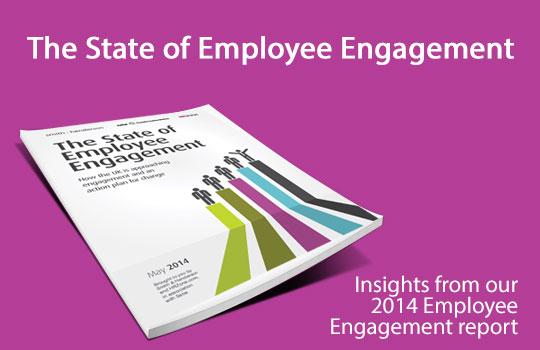This article is based on data and conclusions from our report, The State of Employee Engagement 2014. You can download the report here and learn what best-performing companies are doing when it comes to engagement, and how you can ramp up your employee engagement efforts.
How often should you conduct an employee survey?
To help identify key priorities for improving employee engagement, 81% of organisations conduct an employee survey (State of Employee Engagement, 2014). We often hear the question, “how often should I conduct an employee survey?”
While some organisations run six monthly pulse surveys or an employee survey every other year, we recommend annually is best for most companies. This can help to keep the business focused on improving employee engagement, allows you to evaluate the impact of your change initiatives and identify any emerging workforce challenges. However, ultimately this will depend on the nature of your business and survey feedback cycle.
How often companies conduct their employee surveys
We learned through The State of Employee Engagement research project that most organisations conduct their survey annually, with 18% surveying more than once a year and 4% using a system of continuous feedback. A minority survey their employees every other year:

So what works best? Organisations that survey their employees more frequently report higher levels of satisfaction – those with a system for continuous feedback, alongside those conducting an employee survey more than once a year, are most satisfied with their engagement efforts:

Conducting your survey at least annually can help to keep the business focused on improving engagement and allows you to evaluate the impact your change initiatives. However, this needs to be balanced with a risk of ‘surveying out’ employees – if you ask for their feedback too often and don’t have sufficient time between surveys to act on this.
Evaluating the options for your organisation
When deciding how often to schedule your employee survey it’s important to consider how long your survey feedback cycle takes. The aim is to ensure you have sufficient time between surveys to act on employees’ feedback.
For an organisation conducting their survey online, once they have finalised the survey questions the process is likely to take around ten weeks:
- 2 weeks (at least): pre-survey communications to help build awareness to the survey and remind employees how you are committed to acting on their feedback
- 3 weeks: keeping your survey open so all employees can participate
- 1-2 weeks: how long it takes a typical survey provider to analyse the results, make key recommendations and provide reports for each manager/department
- 2-3 weeks: action planning and communication of the survey key themes to employees
This relies on good planning. For example, before launching your survey, schedule action planning meetings and communications in advance to avoid any unnecessary delays.
1. Survey every other year
For organisations with a longer survey feedback cycle, conducting their survey every other year may work best. For example, for an organisation conducting paper surveys in multiple languages and whose organisational structure makes action planning more complex it could take several months between employees providing feedback and action plans being developed.
The main drawback with this approach is it can be very difficult to keep the organisation focused on improving employee engagement for two years without any measurement.
2. Annual survey
For most companies, conducting their survey annually is probably just about right:
- This normally provides adequate time since your previous survey to communicate and act on the feedback
- It allows you to benchmark progress and evaluate if your change initiatives have been effective
- Against a backdrop of a changing economy and labour market, an annual survey can help you understand and better predict your staff turnover risks
- If leaders and managers know that their team members will be invited to provide feedback in twelve months’ time, they are more likely to take responsibility of what they can influence and make positive changes.
3. Pulse Surveys
Shorter ‘pulse surveys’, which normally involve a sample of employees can serve a useful purpose. These can be used in two ways:
- Following your main employee survey a pulse survey, often six months later, can help track progress in key areas
- If your organisation is going through a period of rapid change, or needs to assess the progress it is making in key areas, a quarterly or six monthly pulse survey can help to track this. However, if only a sample of employees is invited to participate in each survey, the results cannot be reliably analysed and broken down for smaller departments.
4. Continuous Feedback
Alongside a traditional ‘all employee’ survey, it’s important to compliment this with ongoing feedback. For example, take a leisure company which hires many seasonal workers to cope with peak demand in the summer. Onboarding surveys designed to measure how new hires understand its values, the effectiveness of the training and support from their supervisor would help track and improve employee engagement amongst this key group.
This article is based on data and conclusions from our report, The State of Employee Engagement 2014. You can download the report here and learn what best-performing companies are doing when it comes to engagement, and how you can ramp up your employee engagement efforts.








One Response
ongoing surveys
Hi ,, I have started , not long ago, ongoing surveys for variety of purposes not only satisfaction,, i have notice the positive reaction on my employees and they start believing in me and supporting my decisions .. i will try try to apply some of the advice i get from HRZone .. and hope I will be able to achieve more positive employees engagement in my work